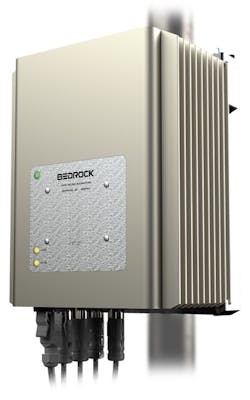Last year, Bedrock Automation announced that its industrial control system (ICS) was the first ICS to meet the Military Standard 461 and International Electrical Commission 61000 standard for electromagnetic pulse (EMP) resistance.
Watch a video of the ICS withstanding shocks from a Tesla coil.
While reviewing that release from Bedrock Automation last year, I asked Albert Rooyakkers (founder and CEO of Bedrock Automation) what good it was to the user if the controller was EMP protected, but not the rest of the system it relies on for power. At the time, Rooyakkers answered: “The immediate issue for an owner/operator is to assure a safer and more orderly shutdown of a process in the event of an accidental or intentional EMP strike, and this is what an EMP-hardened control and safety system can provide. Plus, since ICSs are typically installed with an expected service life of 20 to 40 years, the automation technology event horizon should anticipate as much as possible as far into the future as possible. Solving EMP now puts an owner/operator ahead of a likely curve of cyber defense issues.”
One year later, Bedrock Automation announced that it has now extended its controller EMP resistance to both its secure power supply (SPS.500) and lithium uninterruptible power supply (UPS.500). As with the controller announcement last year, the power supply and UPS have achieved compliance with Military Standard 461 and International Electrical Commission 61000 for EMP resistance.
“As the threat of an EMP event becomes increasingly understood, our users can have greater confidence that their operations will not be interrupted. This is the kind of comprehensive cyber protection that is essential for both performance and safety as global industry becomes increasingly digitized,” said Rooyakers in the announcement.
National Technical Systems, an independent military and industrial testing firm, conducted test RS105 for radiated susceptibility to a transient electromagnetic field. The power supplies were tested separately, each receiving repeated 50,000 V/m nanosecond EMP strikes that emulate the energy of a high altitude electromagnetic pulse (HEMP), as would be created by an atmospheric nuclear detonation. The Bedrock power supplies performed without error and without consequential damage during and after the test.
Like Bedrock Automation’s controller, the SPS.500 Secure Power Supply features Bedrock’s deep trust cyber security authentication and onboard intelligence for diagnostics and secure Ethernet communications. Encased in a NEMA 4X sealed aluminum enclosure, it provides single or redundant power, using 90-264 V AC main voltage 50/60 Hz input. Its output of up to 500 watts is software configurable, between 21 to 28 volts. According to the company, users of any PLC, SCADA RTU, PAC or DCS can retrofit to the new SPS.500 inside or outside enclosures, anywhere in a plant and in harsh environments.
The UPS.500 uninterruptible power supply is designed to be the battery backup for the Bedrock OSA (Open Secure Automation) platform, but can be used to supply 24 V DC 12Ah of power to any industrial control system. An onboard secure microcontroller controls the Li-ion polymer battery cell-by-cell, augmenting the high density, rapid charging, extreme temperature tolerance and extended life that characterizes Li-Ion technology. It is also protected by a sealed aluminum enclosure rated for IP66/67.
For more information about how Bedrock Automation has incorporated EMP protection into its intrinsic cyber defense, download the OSA whitepapers titled: “Chapter Two: Empowering Power" and "Chapter Three: Intrinsic Cyber Security Fundamentals” at www.bedrockautomation.com/revolution.
Leaders relevant to this article:


